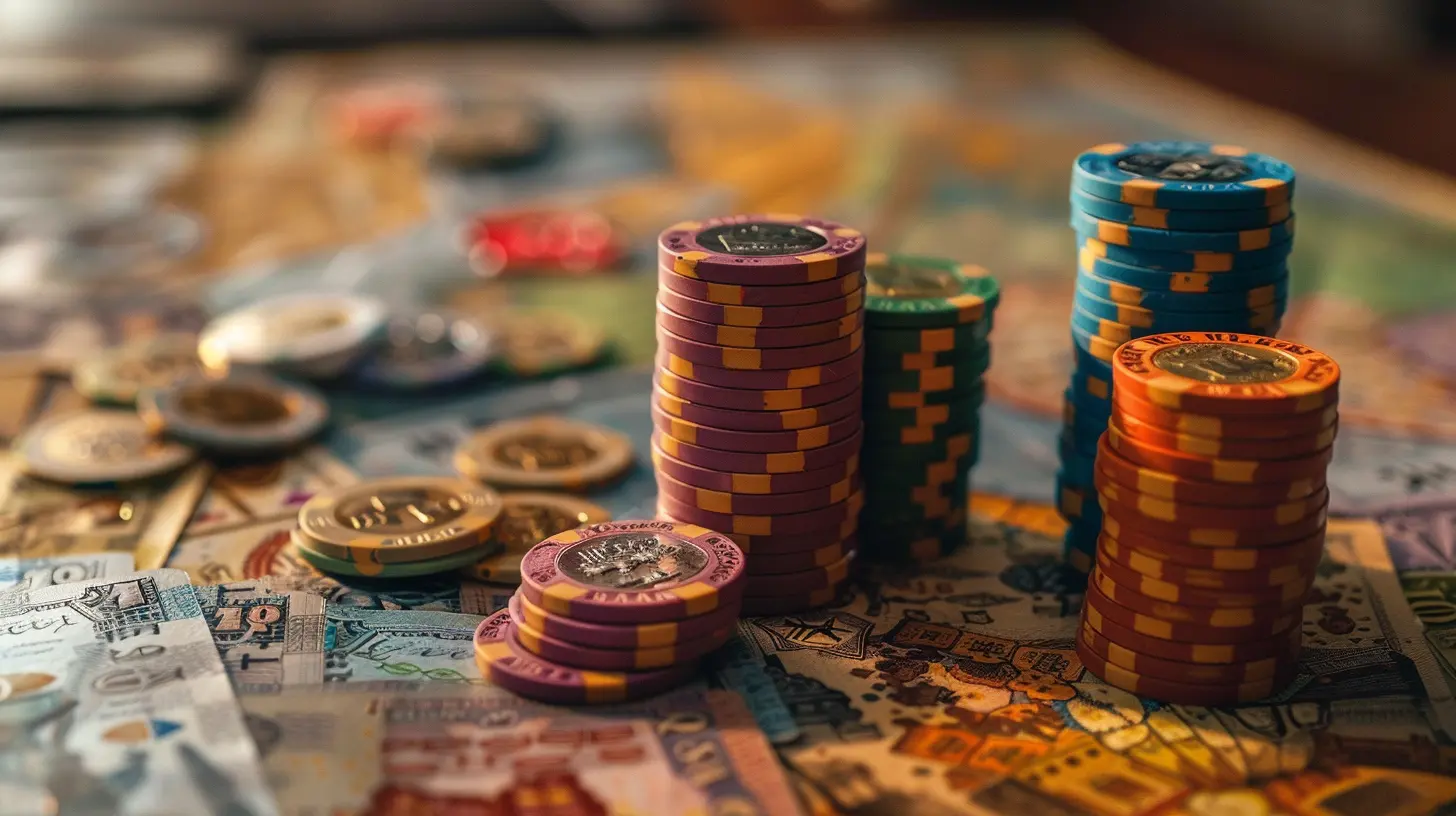Real Money Trading and Its Impact on Game Design
26 November 2025
If you’ve ever played an online game and thought, “Man, I wish I could just skip the grind and buy that rare sword,” you’re not alone. Welcome to the controversial, fascinating, and downright chaotic world of Real Money Trading—aka RMT. Whether you love it, hate it, or secretly use it when no one’s watching, RMT has wormed its way into the fabric of gaming. But what does it actually do to games as games?
Let’s pull back the curtain and take a deep dive into how real-world money is reshaping virtual worlds—and not always for the better.
What is Real Money Trading (RMT), Anyway?
At its core, Real Money Trading is when players buy or sell in-game items, currency, or accounts for real-world cash. We’re talking actual dollars, not gold coins from your favorite fantasy MMO.Whether it's a high-level World of Warcraft character, an ultra-rare skin in CS:GO, or that sweet AK-47 blueprint in Call of Duty, people are out here buying and selling like it's Black Friday.
RMT can happen within game-sanctioned marketplaces or through third-party, often shady websites. And here's the kicker—it’s not always legal, allowed, or even ethical depending on the game's Terms of Service. But let’s be honest, that hasn’t stopped anyone, right?
Why Gamers Are Hooked on RMT
Let’s face it—grinding sucks.Whether you're farming the same raid boss for a 0.01% drop or leveling up your character from scratch, it can get boring fast. That’s where the allure of RMT comes in. It’s like the cheat code for the modern age: skip the boring parts, get to the good stuff, and flex on your friends while you're at it.
Here are a few reasons why gamers turn to RMT:
- Time is money: Not everyone has 40 hours a week to grind.
- Status symbols: Rare items = bragging rights.
- Competitive edge: Get ahead in PvP or look elite without the effort.
- Profit motive: Some players literally make a living off selling in-game assets.
Sounds fair, right? Well, it's not all sunshine and rainbows.
RMT Meets Game Design: A Love-Hate Relationship
Now, here’s where things start getting spicy. Game design is supposed to be about creating fun, balanced, and fair experiences. But RMT? It’s like someone crashing your carefully cultivated garden with a bulldozer.Let’s break it down.
1. Economic Mayhem
Every game with a player-driven economy—think MMOs like RuneScape or EVE Online—is insanely vulnerable to the impact of RMT. When real money enters the mix, inflation often follows.Why?
Because when players inject large amounts of gold or currency into the economy (via gold sellers), prices of in-game items skyrocket. Suddenly, the sword that cost 100 gold now costs 10,000. Legit players who earned their coin the hard way? They're priced out.
It’s like trying to buy a hotdog in a city where everyone else is throwing cash like they're in a rap video. Prices go up, and your hard-earned in-game money means less and less.
2. Pay-to-Win Nightmare
RMT nudges games towards "pay-to-win" territory, even if the original intent was to keep things fair. When players can buy power—better gear, higher stats, rarer items—it undermines the competitive nature of the game.Imagine you’re grinding for hours to gear up, only to be one-shotted by someone who swiped their credit card. Yeah… not so fun.
Game designers are often caught in a tricky spot. On one hand, letting players pay for convenience can keep them happy. On the other, they’re risking alienating the core fanbase who want a level playing field.
3. Toxic Game Loops
Here’s a dirty little secret: some game designers build grindy mechanics on purpose to drive players toward RMT or microtransactions. Yikes.This is especially common in mobile games and free-to-play models. Instead of designing engaging systems, devs create frustrating bottlenecks and time gates. Then, they offer players a "shortcut"—for a price, of course.
It’s like putting the cookies on a high shelf, then charging you to get a ladder. Not cool.
4. Rise of Bots and Cheaters
Where there’s money to be made, there will always be people willing to cheat the system. RMT opens the floodgates to bots, hacks, and third-party software designed to farm gold, mine resources, or snipe trades.This doesn’t just ruin immersion—it creates a hostile, unbalanced environment.
Players end up reporting each other, devs are constantly banning accounts, and genuine users are often caught in the crossfire. It’s like playing tag in a field full of landmines.
5. Undermining Progression Systems
Games are supposed to reward skill, strategy, and time investment. When players can buy their way to the top, it throws the entire progression curve out of whack.The joy of finally unlocking that perfect weapon or reaching the top leaderboard spot? It kinda disappears when someone else can just buy their way there.
It’s like training for a marathon only to find out another runner took a cab to the finish line and still gets the medal.
How Developers Are Responding to the RMT Dilemma
Developers aren’t sitting around twiddling their thumbs. They’ve tried all sorts of tricks to get ahead of the RMT curve—some smart, some... not so much.1. In-Game Marketplaces
Games like Diablo III (RIP Auction House) and more recently, Lost Ark and Black Desert Online, introduced official marketplaces where players can trade safely. The idea? If players are going to engage in RMT anyway, better to keep it in-house and regulated.Sure, you can’t stop it completely—but you can tax it.
2. Token Systems
World of Warcraft introduced the WoW Token—a legitimate way to buy gold with real money. It’s Blizzard’s way of saying, “If you can’t beat ‘em, monetize ‘em.”These systems let the developers control inflation, track transactions, and reduce the black market demand—all while making a tidy profit. Not bad, right?
3. Strict Bans & Detection Tools
Some games go full-on FBI mode. Anti-cheat software, reporting tools, IP bans, you name it.But let’s be honest—RMT sellers are like cockroaches. You squash ten, and fifty more pop up.
4. Game Design Overhauls
The smart devs are rethinking game loops entirely. Instead of overwhelming players with grind and bottlenecks, they focus on meaningful progression. The idea is simple—if players enjoy the journey, they’re less likely to shortcut it.Games like Path of Exile and Elden Ring prove that challenge doesn’t have to equal frustration. There’s a fine line between “engaging” and “soul-crushing,” and the best designers know how to walk it.
RMT in Esports: A Slippery Slope
Now, toss RMT into the competitive esports scene and things get real messy.If one player can buy an in-game advantage, it undermines the very integrity of competition. You wouldn’t let an Olympic sprinter use rocket shoes, right?
Esports thrives on balance and fairness. When RMT seeps into ranked systems, tournaments, or matchmaking, it’s not just bad—it’s a disaster waiting to happen.
The Players’ Perspective: Split Opinions
Ask 100 gamers about RMT, and you’ll get 101 opinions.- Some argue it’s just supply and demand at work. Let the market decide!
- Others say it ruins games and promotes toxicity.
- Many fall somewhere in between: “It's bad… but I’ve done it once or twice.”
It’s a complicated issue—like pineapple on pizza. There’s no right answer, just hot takes.
So, Is RMT the End of "Pure" Gaming?
Not necessarily. But it does challenge the idea of what games are supposed to be.Are they about achievement or accessibility? Fairness or freedom? Is it okay to buy your way to victory if it's allowed?
Real Money Trading forces us to ask tough questions about the soul of gaming. And while some games embrace it, others fight tooth and nail to keep it out.
At the end of the day, how we handle RMT comes down to one thing: balance. If developers can find smart ways to keep players engaged, reward honest effort, and give everyone a chance to shine—maybe, just maybe—they can tame the RMT beast without killing the fun.
Final Thoughts
Real Money Trading is a Pandora’s Box that’s already been thrown wide open. We can’t shove the genie back into the bottle—but we can learn how to live with it.Whether you’re grinding for glory or just trying to enjoy your game in peace, it’s clear RMT isn’t going away anytime soon. The best thing we can do? Stay informed, stay respectful, and play the kind of game we’d want to see more of.
After all, in the end, it’s our worlds we’re building—one click, coin, and character at a time.
all images in this post were generated using AI tools
Category:
In Game EconomyAuthor:

Jack McKinstry

